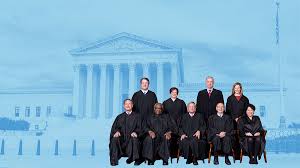
In the last of a series of landmark rulings issued at the end of its 2021–2022 term, the US Supreme Court held that federal executive branch agencies cannot take major regulatory initiatives without explicit congressional authorization. It was the right decision.
The 6 to 3 majority determined in West Virginia et al. v. Environmental Protection Agency that the EPA’s “Clean Power Plan” (CPP), promulgated in 2015, overstepped its statutory authority by dictating that power plants must switch from coal to natural gas for generating electricity. The Court ruled that the EPA’s powers to limit carbon emissions under the Clean Air Act of 1970 (as amended in 1990) do not include the power to dictate what fuels must be used to produce electricity, a policy known as “generation shifting.”
The ruling was based on the Court’s “major questions” doctrine, which requires Congress to explicitly spell out in law administrative policy actions that have sweeping “economic and political significance.” The Obama-era Clean Power Plan presented a case in point. Citing the Clean Air Act as its authority, the Clean Power Plan set emissions limits on power plants intended to force them to switch from coal to natural gas (and later to so-called renewable energy). The EPA’s purpose, as those on the left put it, is to fight the supposed ‘existential threat’ of climate change. According to the Court’s opinion, even the EPA admitted that the CPP “would impose billions [of dollars] in compliance costs, raise retail electricity prices, require the retirement of dozens of coal plants, and eliminate tens of thousands of jobs.” A major question indeed.
The irony is that utilities already were substituting natural gas for coal. The hydraulic fracturing (“fracking”) revolution enabled energy companies to unlock and tap natural gas deposits that previously had been unrecoverable. Supplies soared and prices fell relative to coal, so much so that many utilities converted their power plants to natural gas and the United States not only became energy-independent, but a net energy exporter.
Admittedly, the utilities’ shift away from coal also has been driven in part by the adoption of state “renewable portfolio standards,” which set target dates by which utilities must substitute electricity generated by (less-reliable) wind and solar power for electricity generated by fossil fuels. At least eight states, including California, Colorado, Oregon, Washington and Virginia already have set targets of 100% renewable power by 2050; by 2040 in the case of Oregon.
Writing for the Court’s majority, Chief Justice John Roberts agreed that the Clean Air Act allowed the EPA to establish “a ‘standard of performance’ for [utilities’] emission of certain pollutants into the air.” But the law did not permit the EPA to dictate how the standard of performance would be met. The Clean Power Plan thus overstepped the powers delegated to the EPA by Congress.
Despite the predictable handwringing that greeted the decision—President Biden, in his usual understated way, said it “aims to take our country backwards”—the Supreme Court’s decision in no way signals a looming environmental Armageddon.
Air and water quality began improving in the United States well before the EPA was created by President Richard Nixon in December 1970; it continued to improve at much the same pace thereafter. On a graph relating per-capita US gross domestic product (GDP) to measures of domestic environmental quality (an environmental “Kuznets curve”), the effects of the EPA’s regulatory rules are an inconsequential blip in the trend toward a cleaner environment driven by economic prosperity.
The Court’s decision in West Virginia v. EPA represents a victory for constitutional government and a significant pushback against the seemingly endless expansion of the administrative state. And it’s likely to trigger new challenges to the largely unconstrained diktats of such executive branch agencies as the IRS, the National Labor Relations Board and the Securities and Exchange Commission.
The Court might also want to revisit Massachusetts v. EPA (2016), in which, among other things, it accepted the EPA’s identification of carbon dioxide as one of the greenhouse gases supposedly threatening the planet. It might even find, on a closer second look, that rather than being a pollutant, CO2 is essential to life on Planet Earth.
Reprinted with permission from Independent Institute.

